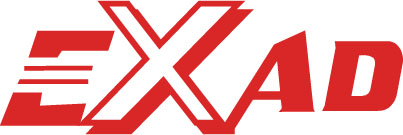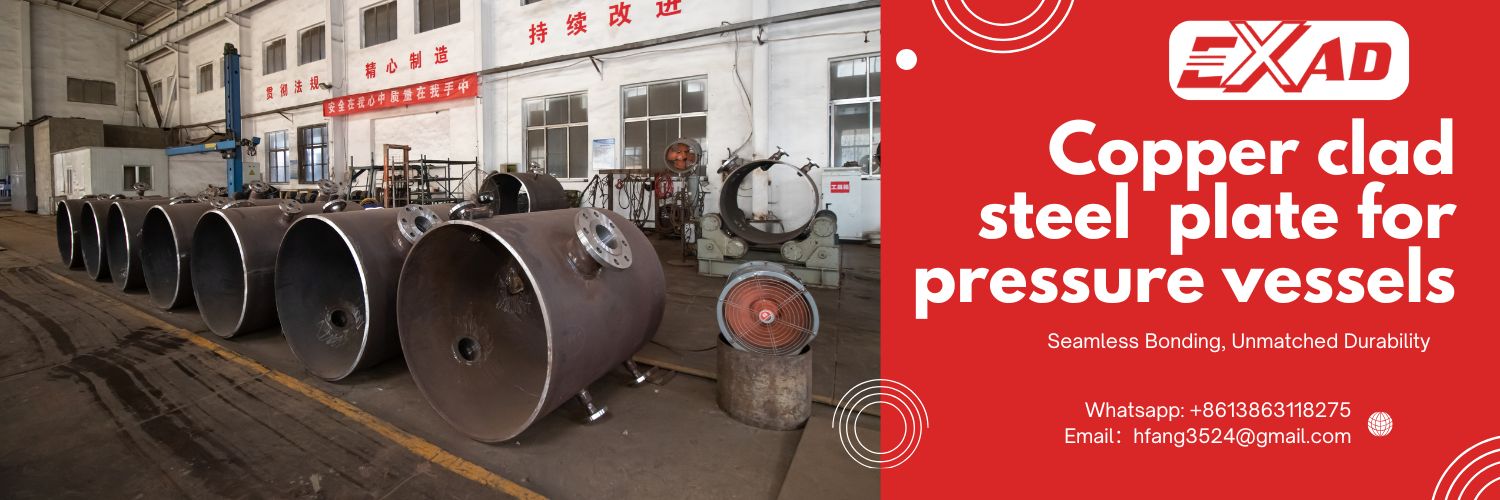In today’s industrial materials field, copper clad steel plate and copper bonded steel plate are both highly regarded. They have their own characteristics and are widely used. So what kind of materials are they and what are the differences? Let’s take a good look at them together.
What is Copper Clad Steel Plate?
Copper clad plate is actually a very clever metal composite material. It is made by combining pure copper and steel tightly together through special process means.
So how is it made? There are several common production processes. For example, explosive welding. The powerful impact force generated by the explosion of explosives allows copper and steel to fit together perfectly under ultra-high pressure. This makes the bond between them very tight and firm.
The conductivity of copper steel clad sheet is particularly good, almost comparable to pure copper. This means that it can be used in places where efficient conductivity is required.
Moreover, it combines the strength of steel, and the overall mechanical strength is very high, very strong and durable. Whether facing external pulling, extrusion, or other external forces. It can withstand it steadily and is not easy to be damaged.
In addition, its corrosion resistance is also great. Even if it is in an environment with high humidity or there are some corrosive chemicals around it. It can protect itself well and maintain good performance for a long time.
What is Copper Bonded Steel Plate?
Copper bonded steel plate is also a material that combines copper and steel. However, its combination method is different from copper-clad steel. It mainly attaches copper to the surface of the steel substrate through methods such as electroplating and thermal spraying.
Copper composite panel also has its own characteristics. One of its biggest advantages is that it is relatively low in cost. Because its copper layer is relatively thin. Unlike explosion cladding copper, it does not use more copper materials. However, its corrosion resistance is slightly weaker than that of copper-clad steel. After all, the copper layer is thinner, and the copper layer is relatively easier to lose during use.
It is particularly suitable for use in grounding systems, such as lightning protection grounding of buildings, and grounding rods. It can often be seen.
Key Differences Between Copper Clad Steel Plate and Copper Bonded Steel Plate
If you compare copper-clad steel plate and copper bonded steel plate carefully, you will find that there are many obvious differences between them.
In manufacturing process
Copper clad stainless steel plate mainly relies on explosive welding and hot rolling to combine copper and steel. These processes are relatively complex and require relatively high requirements.
Copper bonded steel plate uses relatively simple processes such as electroplating and thermal spraying to achieve the adhesion of copper on steel.
In terms of the thickness of the copper layer
The copper layer of copper steel clad plate is usually between 0.5mm and 2mm, which is relatively thick. It’s like wrapping a thick layer of “copper armor” on the steel.
The copper layer thickness of copper bonded steel plate is about 0.025mm-0.25mm, which is relatively thin. It’s like just putting a thin layer of “copper gauze” on the steel.
In terms of conductivity
Because of the thick copper layer, copper clad steel plate is very close to the conductivity of pure copper. The transmission of electricity in it is so smooth.
As for copper bonded steel plate, due to the thin copper layer, the conductivity is relatively low. It is not so powerful when transmitting electrical energy.
In terms of corrosion resistance
Copper clad plate performs better. Even in a relatively harsh environment, such as a place full of salt spray at the seaside. Or in an industrial environment with more chemical corrosive substances, it can resist corrosion well and maintain good performance.
As for copper-bonded steel plate, its corrosion resistance is moderate and it is more suitable for use in general environments. If the environment is too harsh, it may be a bit “unbearable”.
Why is Copper Clad Steel Plate More Expensive?
There are several reasons why copper-clad steel plate is more expensive.
First of all, its copper layer is thicker, which means that more copper materials are used. Everyone knows that copper itself is a relatively expensive metal, and the material cost goes up all of a sudden.
In addition, its production process is not simple, such as explosive welding and hot rolling composite processes. Not only professional equipment is required, but also experienced technicians are required to operate it. The equipment cost and labor cost involved in this are not low.
However, although copper steel clad plate is expensive, it also has its advantages. It has a long service life. It does not need to be maintained or replaced frequently during use. In the long run, the comprehensive cost is still relatively cost-effective. After all, you don’t have to worry about it all the time.
Applications of Copper Clad Steel Plate and Copper Bonded Steel Plate
Application of copper-clad steel Plate
Copper steel clad plate is widely used in many important fields.
In railway electrification conductors, train operation cannot be separated from electricity. Copper-clad steel plate can play its advantages here and provide reliable power transmission guarantee for railway electrification.
In marine engineering. The marine environment is very harsh. There is salt spray everywhere, which is very corrosive. But copper clad stainless steel plate is not afraid. Its excellent corrosion resistance makes it the only choice for conductor materials resistant to salt spray corrosion in marine engineering. Like the connections between electrical equipment at sea, many are made of copper-clad steel plate.
Application of Copper Bonded Steel Plate
There are many applications of copper-bonded steel plate, especially in grounding systems, where it can show its prowess.
For example, lightning protection grounding of buildings. Grounding rods and lightning protection nets made of explosion cladding copper can well conduct the current generated by lightning. Ensure the safety of buildings and people inside.
In the communications industry, copper composite panel also plays an important role in the grounding system of base stations. It is low-cost and can meet basic grounding requirements. It is indispensable for ensuring the normal operation of communication equipment and avoiding lightning strikes.
Conclusion
In short, there are many differences between copper-clad steel plate and copper-bonded steel plate. From manufacturing process, copper layer thickness, to conductivity, corrosion resistance, mechanical strength, application field and cost, they all have their own characteristics. In actual application, we have to consider various factors according to specific needs to choose whether to use copper clad steel plate or copper bonded steel plate.
Moreover, with the continuous development of science and technology and the continuous progress of all walks of life, the market prospects of these two materials in the future are quite broad. Especially in industries such as electricity, communications, and oceans that have high requirements for material performance. They will definitely play an increasingly important role and continue to “escort” our production and life.



